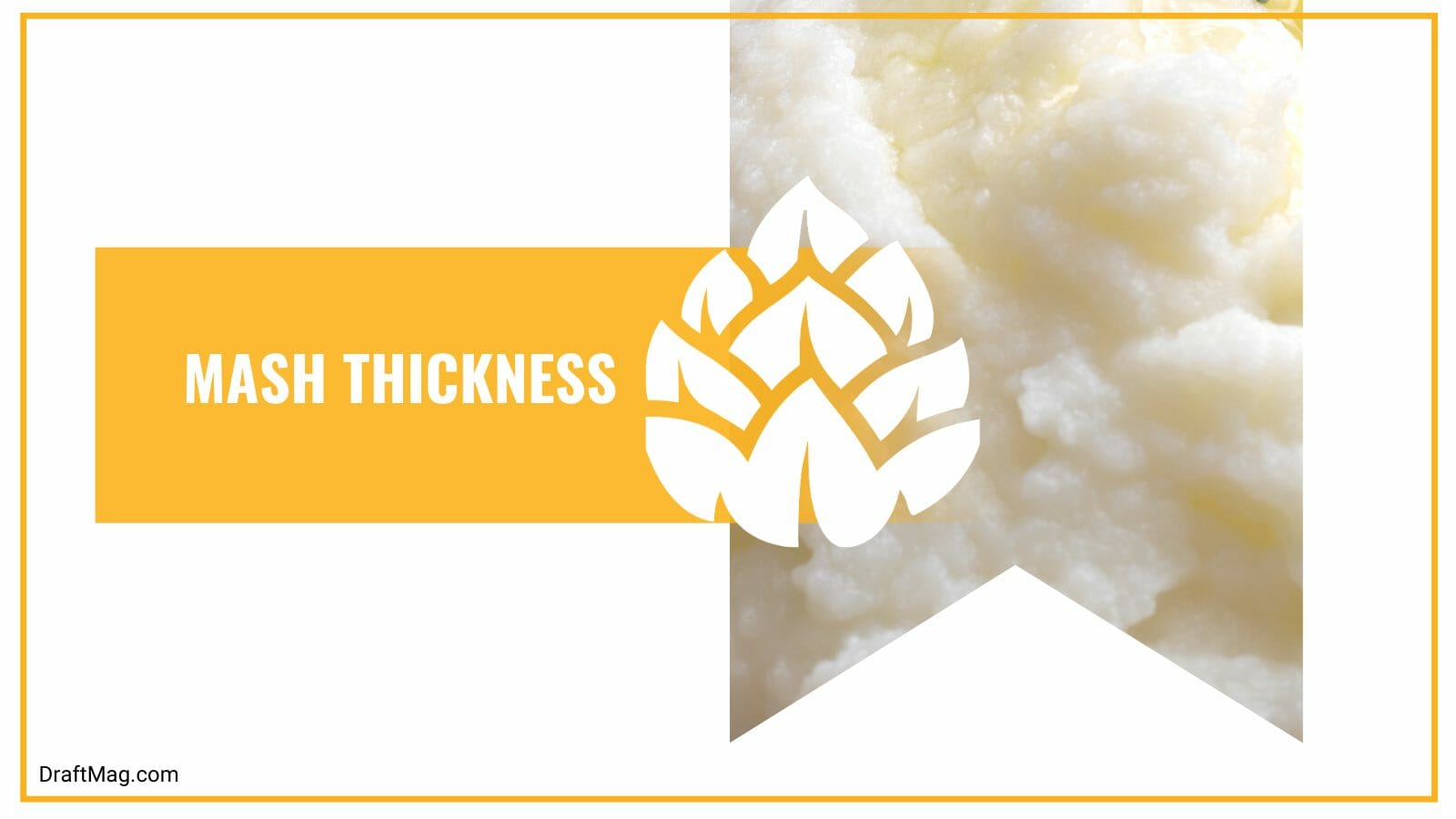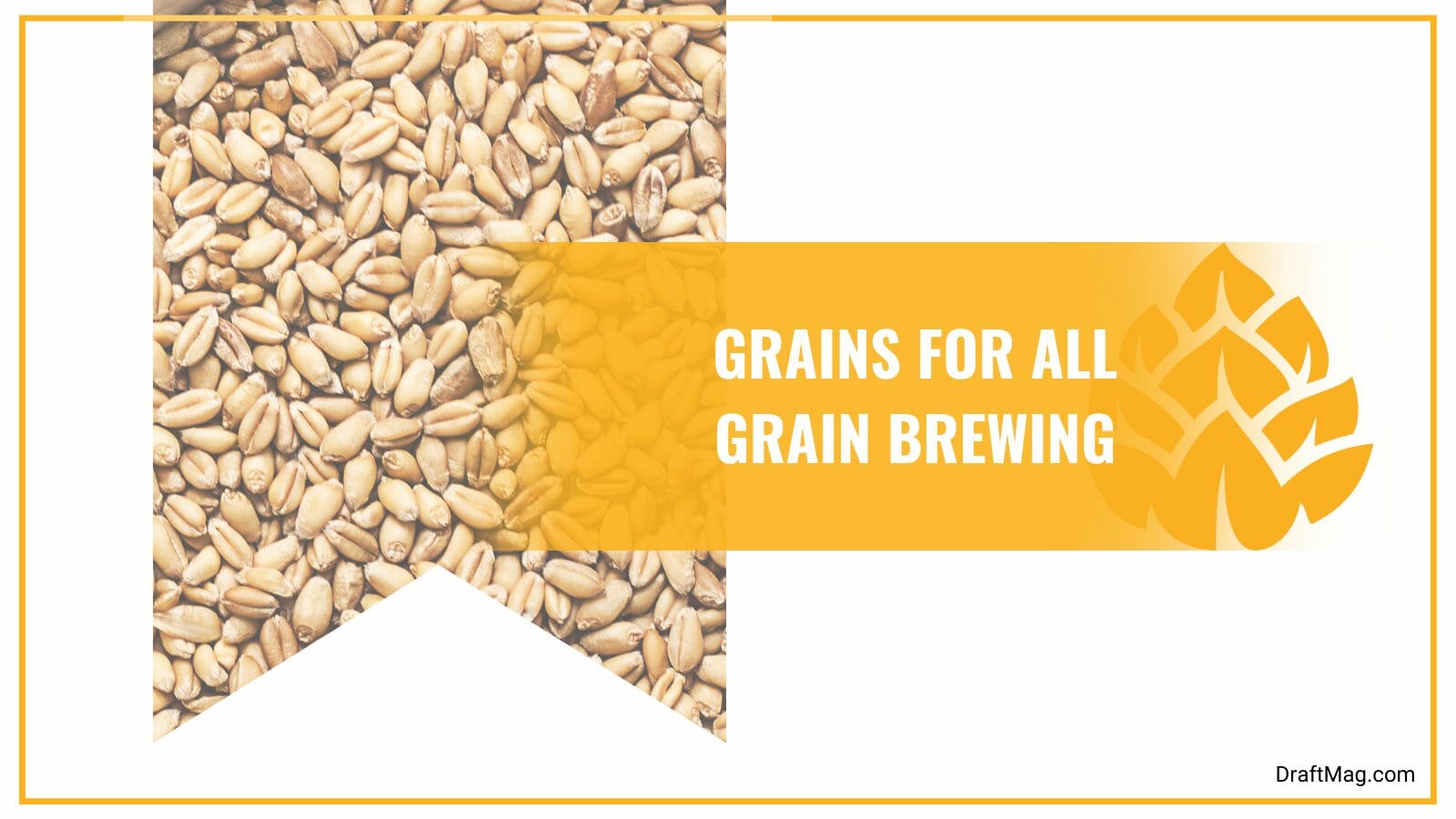Mash Water to Grain Ratio: How To Calculate for Beer Brewing
The mash water to grain ratio is an important starting point for any homebrewer that’s starting out with all-grain brewing. Moving from extract brewing to all-grain brewing can be intimidating because of all the terminologies and formulas that you have to keep in mind.

Understanding the ratio and how you can calculate it will give you more control over your brewing process. To know more about the water-to-grain ratio, our guide below explores how you can calculate it and other formulas to keep in mind.
What Is the Mash Water to Grain Ratio?
The mash water to grain ratio is 1.25 quarts of water to one pound of grain. Using this universal ratio, you can measure how much water you need for the grains you want to brew. It is important to get this ratio right for every brew. It is also very important to brew the water you will use to keep your beer’s flavor exactly as you want it!
For non-American brewers, you should aim for between 2.5 and 3.2 liters of water per kilogram of grain. For example, the amount of water that you need for a 5-gallon brew is 6.5 gallons. You need more water because it will boil off at 1 gallon per hour.
What Does Mash Thickness Mean?
Mash thickness means the water to grain ratio or the liquor to grist ratio, as some brewers call it. It defines the volume of water in quarts or liters, and the mass of malts or other grains is measured in pounds or kilograms.
The lower the water in your mash, the thicker it will be. The thickness has different impacts on the wort quality, and the higher the thickness, the higher the gravity of the first wort will be. Wort fermentability is also affected by wort thickness, so if the wort is too thin and light, it will also be more fermentable.

Due to this, brewers should understand how to control wort thickness so that their beer recipes will be consistent. When your mash is too thin, the enzymes that are meant to ferment the beer will work more solely, and this affects your original gravity and overall efficiency.
On the other hand, a thick mash is less fermentable, and it has more malt characteristics. If you want to have a strong malty flavor in your beer, you should have a thick mash. But, if you want a high alcohol content, you need more fermentable sugars, and a thin mash is the ideal choice.
How Do You Calculate Mash Water to Grain Ratio?
To calculate mash water to grain ratio, you can use the standard ratio of 1.25 quarts of water to one pound of grains. Once you set the ratio, you can calculate other aspects of your all-grain brewing process, like the volume of the water as well as the temperature.
The typical range is from 1 to 1.5 quarts of water per pound of grain. Although there is a standard you can choose, it’s a better idea to find a ratio that works for your brewing process. Online homebrewing calculators make it easy for you to calculate the aspects of your brewing process once you set the water-to-grain ratio.
A wort water calculator will help you figure out how much water you will need for the grains you’re brewing, depending on the type of grain you’re making. These calculators will help you set the infusion that you need and plan additional rests.
What Is the Formula for Strike Water Volume?
The formula for strike water volume is the weight of the grain multiplied by the desired wort thickness. For instance, with a wort thickness of 1.25 quarts per pound, and a grain bill of 5 pounds, you need a volume of 6.25 quarts of water.
What Is the Formula for Mash Water Volume?
The formula for mash water volume is the water volume plus grain absorption. Grain absorption has a standard of 0.5 quarts of water for every pound of grain. It is tricky because the different grains and adjuncts have varying absorption rates.

Based on this formula and our above recipe, the water volume is 6.25 quarts, and the grain absorption is 2.5 quarts. The water volume is 8.75 quarts.
What Is the Formula for Total Mash Volume?
The formula for the total mash volume is the volume of strike water plus the volume of grain. This allows you to calculate the displacement of grain. The grain displacement is calculated with an average of 0.32 quarts per pound.
With the previous recipe in this article, the volume of water is 6.25 quarts, and the volume of grain is 1.6 quarts. This sets the total mash tun volume at 7.85 quarts. With this formula, you can check whether the tun can hold all your grains.
How Does Mash Thickness Affect Mash Temperature?
Mash thickness affects mash temperature because the thicker the mash is, the higher temperature you need. When your mash is thick, you have less water for every pound of malt being brewed. Due to this, you need the sparge water at a high temperature.
The temperature of the water and the liquor-to-grain ratio needs to be considered. Keep in mind that you lose between 41 and 50 degrees Fahrenheit from your strike water temperature during brewing. So, if the water is 167 degrees Fahrenheit, the final temperature can go as low as 120 degrees Fahrenheit.
If your mash is thick, you need a higher temperature of the water. The water will need to work hard to reach the final temperature that you’re looking for. For instance, if you’re brewing a high-gravity beer, you need a lower water-to-grain ratio and a higher strike temperature.
How Do You Mash Your Grains for All-Grain Brewing?
You can mash your grains for all-grain brewing by combining crushed grains, malts, and adjuncts with hot water. Soak the grains for an hour, although this depends on the type of beer you’re making, and then drain out the liquid from the grain.

Follow the steps below to mash your all-grain batch:
- Heat up enough water for your mash. You can use the standard ratio provided in this guide, but make sure you boil more for extra. For a final mash temperature of 152 degrees Fahrenheit, the initial infusion temperature should be 163 degrees Fahrenheit.
- Preheat the cooler with hot water, swirl it around, and throw it out. This will prevent any heat loss when brewing.
- Pour a gallon of water into the mash tun and add the crushed grain, stirring it in. Mix it together slowly and avoid splashing. Also, ensure that all the grains are soaked.
- Check to see if you have reached your desired temperature. Add hot water if the temperature is too low and cold water if it is too high.
- The result is a full-bodied wort that you can then ferment and condition.
FAQ
1. How Does Steeping Differ From Mashing?
Steeping differs from mashing because it focuses on extracting flavor and color from the grains, while mashing will break down the starch in the malts into fermentable sugars. Steeping is done during extract brewing, while mashing is for all-grain brewing. Extract brewing and all grain brewing are two different methods.
Learn more about how much water is in beer.
Conclusion
Now that you know what the water to grain ratio is, you can calculate all that you need for an all-grain brewing process.
Here’s a recap of our guide before you go:
- The liquor-to-grist ratio for all-grain brewing is 1.25 quarts of water per pound of grains.
- Wort thickness is the water-to-grain ratio, and the less water in the brew, the thicker the beer will be.
- An online brewing calculator can help you figure out how much water you will need for your grains.
- The thicker the mash, the higher the temperature will be.
- Mashing is done by mixing crushed grains with hot water, soaking the grains for an hour, and then draining the liquid out.
When using the all-grain brewing process on your brew day, you should take note of the amount of grains and water you used to determine a ratio that works for you.






